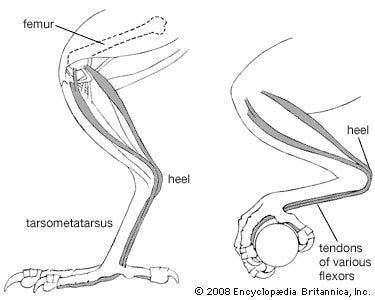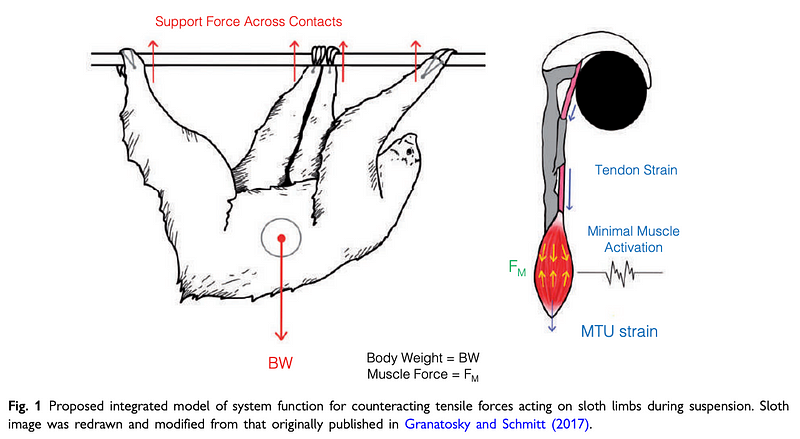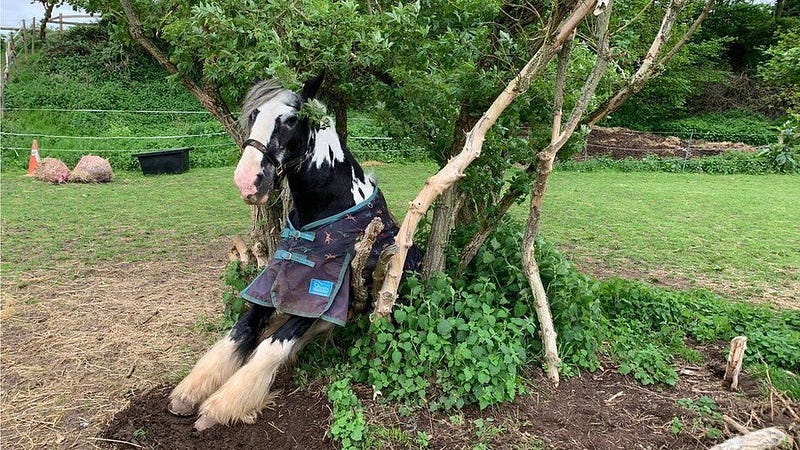# Unraveling the Secrets of Why Birds and Sloths Don't Fall
Written on
Chapter 1: Introduction to Tree-Dwelling Animals
Many of us have pondered the peculiarities of birds: their striking eyes, lack of teeth, and remarkable ability to remain airborne while most creatures would plummet like stones. It's particularly curious how they can sit comfortably on tree branches without ever seeming to fall. While I've witnessed various animals—cats, squirrels, and even children—take tumbles from trees, I’ve yet to see a bird do the same. What’s their secret to staying perched?
The answer lies in some astonishing biological adaptations. Interestingly, this is reminiscent of how horses, cattle, and sloths manage to avoid falling from heights. Let’s delve into the biological equivalent of a safety mechanism!
Section 1.1: Understanding Tendons and Their Functions
To appreciate how these animals maintain their grip, it’s essential to distinguish between muscles, tendons, and ligaments.
Muscles are composed of muscle cells (or fibers) enveloped in connective tissue, filled with proteins that contract upon stimulation. In contrast, ligaments—made from collagen and elastin—serve as stable connectors between bones but do not contract. Tendons, on the other hand, also consist of collagen and elastin and serve to connect muscles to bones, acting like anchors that stabilize a structure.
In birds, tendons link leg muscles to their talons. When a bird perches, the natural bending of its legs due to gravity causes its talons to close around the branch. This mechanism is akin to a pulley system, effectively acting as a parking brake.

However, not all birds exhibit this trait. For instance, European Starlings balance on the pads of their feet without the automatic flex of their claws.
Section 1.2: The Sloth's Unique Adaptations
Now, let’s consider sloths. These creatures rely on their claws to cling to tree branches. Though sloths are known to occasionally fall from trees, this behavior isn’t advantageous for their survival. To counteract this, sloths utilize a similar tendon mechanism as birds. Their tendons naturally lock into position when at rest, allowing their claws to grip tightly and prevent falls.

Chapter 2: The Stay Apparatus of Horses
While we may not often see horses in trees, they also have evolved mechanisms to prevent falls. Horses use what is known as a “stay apparatus” to maintain their stance even when their legs are relaxed. Unlike humans, whose legs bend upon relaxation, horses can sleep standing, allowing for quick escape from predators.
They can achieve this by balancing their weight on three legs while letting the fourth rest. The tendons in their legs lock the kneecap in place, ensuring that the legs remain straight and upright, similar to a tripod.

Horses and cattle, much like a four-wheel-drive vehicle, can manage their weight distribution effectively, providing stability in various conditions. If automakers ever decide to design vehicles with legs instead of wheels, they could take inspiration from these majestic animals!
Section 2.1: The Common Thread
In conclusion, birds, sloths, horses, and cattle all exhibit fascinating adaptations that enable them to leverage their tendons for stability and grip. When gravity exerts its force, these adaptations ensure that birds and sloths can clasp onto branches while horses and cattle remain upright, ready to flee from potential threats.
We can even recognize this phenomenon in ourselves. For example, if you let your hand hang limply off a flat surface, your fingers naturally spread apart. Conversely, if you pull your hand back, your fingers curl as if grasping something. This reflex, known as the tenodesis grasp, illustrates the remarkable functions of our tendons!
The first video titled "Why Are Sloths So Slow?" explores the unique adaptations of sloths that contribute to their slow movements and tree-dwelling lifestyle.
The second video, "Why Do Sloths Hang Upside Down? Episode 32," delves into the intriguing reasons behind sloths' unique hanging behavior and how it benefits their survival.